Every electric car comes with a basic charging plug that is designed to charge the car in a domestic three-pin socket. But there are two more types of chargers available, which often cause various confusions. Among them, “Can I Charge My EV from a 3 Pin Plug?” is a common one.
Yes You can. As it happens most of EVs charging port have three-pin socket-compatible plugs. But the problem occurs when we are in a hurry and need fast charging. In those cases, EV charging from a three-pin plug will not be a suitable choice.
However, basic knowledge about all types of EV chargers will help you easily decide which type will work best at what time. Check out this guide and alleviate the confusion with charging from a 3 pin plug.
Types of EV Chargers
With the increasing adoption of EVs, understanding the different types of chargers is crucial for EV owners. Here is an insight into two primary types in-home of EV chargers: Level 1 chargers and Level 2, or EV Dedicated Home Chargers.
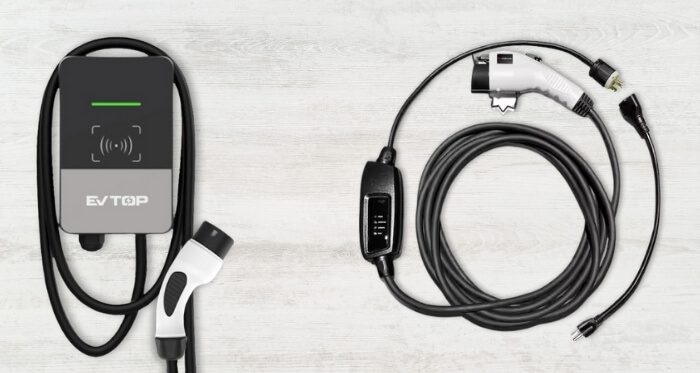
Level 1 EV Charger
The most basic form of EV charging is Level 1 charging, typically carried out using a standard household electrical outlet, like a three pin plug.
This type of charger operates at 120 volts AC and is suitable for overnight charging, making it convenient for residential settings. To engage in Level 1 charging, EV owners require a standard 3-pin plug, commonly found in homes.
The Level 1 charging process uses the standard household electrical infrastructure, making it accessible and straightforward for users. While Level 1 charging is slower compared to other options, it serves as a practical solution for those with lower daily commuting needs.
Level 2 or EV Dedicated Home Charger
Level 2 charging represents a faster and more efficient charging solution, primarily intended for residential use. These chargers operate at 240 volts AC, reduce a significant charging time compared to Level 1.
To utilize Level 2 charging, EV owners need a dedicated home charging station. Unlike Level 1, which uses a standard 3 Pin Plug. The Level 2 chargers also require specific plugs or connectors, such as the SAE J1772 or Tesla’s proprietary connector, which usually varies by country.
The installation of a dedicated home charger involves a certified electrician setting up the necessary infrastructure to ensure safe and efficient charging.
A dedicated home EV Charging station is suitable for individuals who require higher daily mileage or those seeking quicker charging solutions at home.
It’s essential to know the difference between Level 1 and Level 2 chargers if you want to optimize your EV charging experience. Whether using a standard 3 Pin Plug for Level 1 or specific connectors for Level 2, selecting the right charger depends on individual commuting needs, charging speed requirements, and the available infrastructure.
Can I Charge My EV from a 3 Pin Plug?
After going through this whole guide, you might get the answer to the confusing question: Can I Charge My EV from a 3 Pin Plug?
Yes, you can charge your EV with a 3 Pin Plug. There are no restrictions on it, as it is the standard EV charging method. All Electric car manufacturers provide an electric vehicle service equipment (EVSE)-1 cable or granny charger that is designed to work with a standard 3-pin plug in a regular socket.
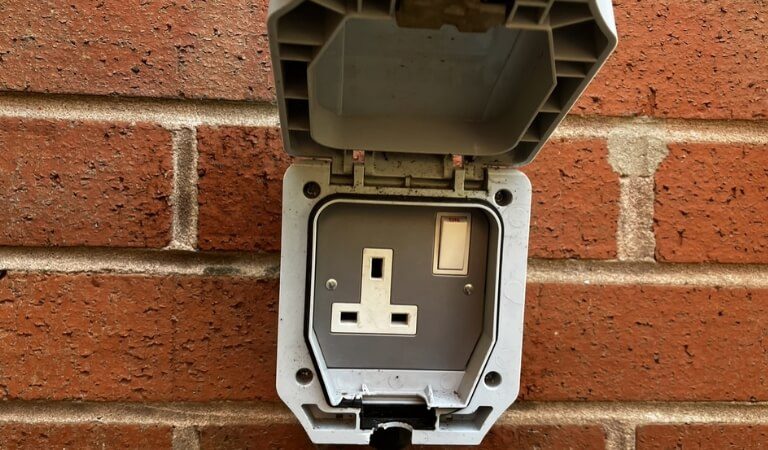
However, charging on a household socket will not be suitable for people who drive for a long distance every day and need quick charging. A three-pin plug or level 1 EV charger absorbs up to 2.4 KW per hour, which is rated very low compared to the rest of the chargers and takes up to 30 days to fully charge an EV.
So, generally speaking, there is no issue with charging your electric car with a 3-pin plug. But when it is about fast charging or the car needs more KW daily, consider installing a dedicated home charger or going to a nearby DC EV Charger Supplier.
Advantages and Disadvantages of 3 Pin Plug EV Charging?
Basically, all EVs can be charged through a three pin socket that most households have. Charging your EV with this ply type has both advantages and some drawbacks. Take a look at those:
Advantages:
Here are the advantages of using 3 pin plug while chagrin your electric vehicle:
Accessibility
One of the primary advantages of 3 Pin Plug EV charging is its universal accessibility. Standard electrical outlets with 3 Pin Plugs are commonly found in homes, making it convenient for EV owners to charge their vehicles at residential locations without requiring additional infrastructure.
Cost-Effective Setup
Setting up a Level 1 charging station with a 3 Pin Plug is cost-effective. You can utilize existing household electrical outlets, eliminating the need for specialized charging equipment or professional installation. This affordability makes EV ownership more approachable to a broader range of individuals.
Universal Compatibility
3-pin plug charging has universal compatibility, and most electric vehicles can be charged using this standard. This versatility will be advantageous if you need to charge your vehicles at different locations.
Disadvantages:
Life everything else where there are advantages there also disadvantages, which you shouldn’t ignore, because knowing them can be great help. Here are the disadvantages of using 3 ping plug while charging your EV:
Slow Charging Speed
One significant drawback of 3 Pin Plug EV charging is the relatively slow charging speed. Level 1 charging, facilitated by a standard household outlet, delivers a lower charging rate compared to more advanced charging options. This limitation may not be ideal for individuals with higher daily mileage requirements.
Limited Range Extension
Due to the slower charging speed, 3 Pin Plug charging is best suited for overnight or extended charging periods. This may limit the ability to extend the driving range of an electric vehicle quickly, making it less suitable if you require frequent or rapid charging.
Not Ideal for High-Powered EVs
High-powered electric vehicles with larger battery capacities may find 3 Pin Plug charging less practical. The extended charging times may not meet the demands of users with EVs that have higher energy storage capacities, potentially leading to inconvenience.
3 Pin Plug EV charging offers accessibility and cost-effectiveness, but in exchange, it has slower charging speed and limitations for high-powered electric vehicles.
Advantages and Disadvantages of Dedicated Home Charger?
As electric vehicles gain popularity, the decision between using a standard 3 Pin Plug and installing a dedicated home charger becomes a pivotal consideration. Let’s take a look at the advantages and disadvantages of opting for a dedicated home charger for EVs.
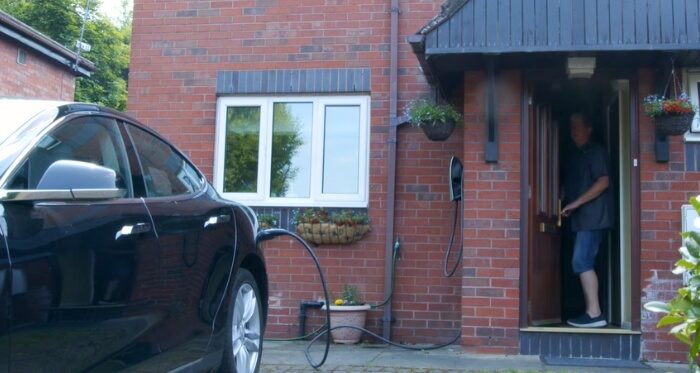
Advantages of a Dedicated Home Charger:
Faster Charging Speed
The standout advantage of a dedicated home charger is the significantly faster charging speed compared to a standard 3 Pin Plug. Operating at higher voltage levels, typically 240 volts AC, these chargers can refill an EV’s battery much more rapidly, which is more convenient if you have higher daily mileage.
Convenience and Accessibility
With a dedicated home charger, you enjoy the convenience of a designated charging station at your residence. This eliminates the need to search for public charging stations, allowing you to start each day with a fully charged EV. The accessibility factor adds a layer of convenience to your daily routine.
Customization and Smart Features
Dedicated Home EV chargers often come with customizable settings and smart features. You can schedule charging times to get benefit of off-peak electricity rates or integrate their chargers with smart home systems. This level of customization adds a layer of efficiency to the charging process.
Disadvantages of a Dedicated Home Charger:
Installation Costs
One notable disadvantage is the upfront cost associated with installing a dedicated home charger. Unlike using a standard 3 Pin Plug, the installation of a Level 2 charger is different and may require professional assistance, contributing to the overall cost. However, it’s essential to view this as an investment in long-term convenience.
Limited Portability
While a home charger provides convenience at your residence, it lacks the portability of a standard 3 Pin Plug. If you frequently travel or want the flexibility to charge your EV in different locations, the lack of portability will appear.
Compatibility with Specific Connectors
Different EV manufacturers use various charging connectors, and some dedicated home chargers may be compatible with specific brands or models. It’s crucial to ensure that your chosen charger aligns with your EV’s charging requirements to avoid compatibility issues.
A dedicated home charger offers faster charging, convenience, and smart features but comes with installation costs and limitations in portability. Consider your daily routine, charging needs, and long-term convenience when deciding between a dedicated home charger and a standard 3 Pin Plug.
Best Dedicated Home EV Charger In Bangladesh
A 3-pin plug is well-suited for individuals with lower mileage, but if you want to fully recharge your battery in an urgent situation, this slow charging process
will not be appealing. In that case, you must charge your car with a quicker charger. A dedicated home EV charger is the first stage of fast charging in an EV charging circle. The second and last one are the DC fast charging.
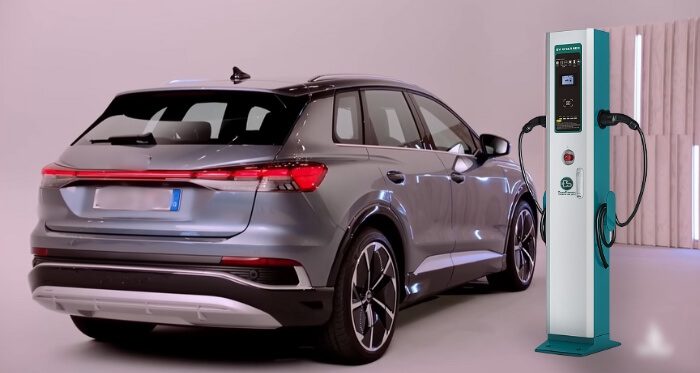
Dedicated home chargers are mainly known as level 2 chargers, and the charging method is similar to a 3-pin plug or level one charger. However, these chargers utilize an electric source of 208 to 240 volts with a dedicated circuit that converts the regular AC to a higher rate. Your car will get a range of miles from 3 to 19 in an hour.
You can install a dedicated EV charger in your home. But there is a slight problem with the installation cost. However, EV Charging Stations are the best alternative option to get a cost-effective quick charge. CrackPlatoon has the most reliable and top-quality level-2 or dedicated home EV Charging Station in Bangladesh. You can either charge your vehicle at the nearby CrackPlatoon Charging Station or install one at your house. Take a look at the CrackPlatoon CSL AC chargers:
MIHIR52-AC TYPE
The MIHIRS2 is a flexible AC charger catering to various needs with a power range of 7-43kW. Compatible with Type 1, Type 2, and GB/T, it boasts a straightforward and practical design. Installation is easy and also offers high protection levels by meeting IP54 standards for dust and water resistance.
Technical Data of MIHIR52:
Configurations:
- Outlet : Single or Double
- Output Power :
Single: 7kW/11kW/22kW/43kW
Double: 142kW/22kW/44kW/86kW - Dimensions : 1630 mm x 280 mm x 400 mm (H x W x D)
- Weight : 53kg
General Specifications:
- Shell Material : Sheet Metal
- Installation Type : Floor Stand
- Screen : 5-inch LCD
- Input Voltage : Single Phase: 230VAC±10% – Three Phase: 400VAC±10%
- Rated Power : Single Phase: 7kW/11kW – Three Phase: 22kW/43kW
- Output Current : Single Phase: 32A – Three Phase: 63A
Functional Features
- User Interface : Emergency Stop Button, LED Indicator, LCD Touch Screen, RFID
- Safety Features : Overvoltage Protection, Over Current Protection, Leakage Protection
Working Environment
- Application Place : Indoor/Outdoor
- Working Temperature : -30° C to +55° C
- Cooling : Natural Cooling
- Special Protection : Anti-UV Protection
AMITI21-AC TYPE
Another one is the AMITI21 charging pile, designed for home use and convenient vehicle delivery, delivering a rated power of 7 ~ 22kW. Supporting Type 1, Type 2, and GB/T. This EV Charging Station is versatile, featuring a simple and lightweight design. In addition, it provides dual usage options, as a wall box or floor stand. With an IP54 protection level, it consumes less than 2W in standby mode.
Specifications of MIHIR52:
Configurations:
- Outlet : Single
- Output Power : Single: 7kW/11kW/22kW/43kW
- Dimensions : 350 mm x 196 mm x 150 mm (H x W x D)
- Weight : 3kg
General Specifications:
- Shell Material : ABS
- Installation Type : Wall Mounted, Floor Stand (Optional)
- Input Voltage : Single Phase: 230VAC±10%
- Charging Socket : Single (Type 2)
- Output Current : 32A
Functional Features
- User Interface : Emergency Stop Button, LED Indicator, LCD Touch Screen, RFID
- Safety Features : Overvoltage Protection, Over Current Protection, Leakage Protection
Working Environment
- Application Place : Indoor/Outdoor
- Working Temperature : -30° C to +55° C
- Cooling : Natural Cooling
- Special Protection : Anti-UV Protection
ALAK48-AC TYPE
Lastly, ALAK48 is tailored for commercial use and vehicle delivery, offering a rated power of 7 ~ 22kW. Compatible with Type1, Type2, and GB/T similarly the other twos. It also provides flexibility with two mounting options: a wall box and a floor stand. Easy installation, practical design, and a high degree of protection meeting IP54 standards for dust and water resistance characterize this versatile charging solution.
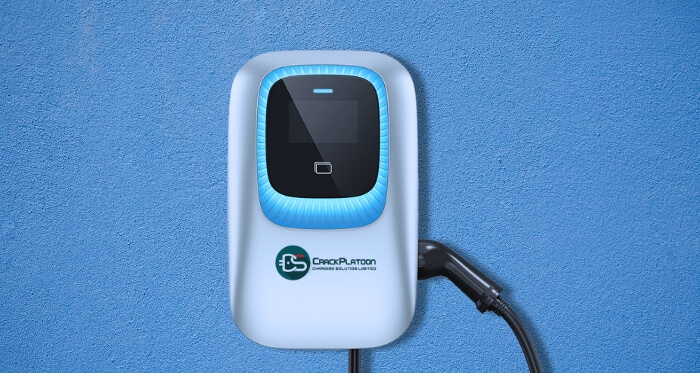
Specifications of MIHIR52:
Configurations:
- Outlet : Single
- Output Power : Single: 7kW/11kW/22kW/43kW
- Dimensions : 375 mm x 260 mm x 104 mm (H x W x D)
- Weight : 5 kg
General Specifications:
- Shell Material : Aluminum Alloy
- Installation Type : Wall Mounted, Floor Stand (Optional)
- Input Voltage : Single Phase: 230VAC±10% – Three Phase: 400VAC+10%
- Charging Socket : Single (Type 2)
- Output Current : 32A
Functional Features
- User Interface : Emergency Stop Button, LED Indicator, LCD Touch Screen, RFID
- Safety Features : Overvoltage Protection, Over Current Protection, Leakage Protection
Working Environment
- Application Place : Indoor/Outdoor
- Working Temperature : -30° C to +55° C
- Cooling : Natural Cooling
- Special Protection : Anti-UV Protection
Choose the right EV charger based on your household energy capacity and daily mileage needs.
Final Words
The 3-pin plug looks very traditional and is a generic way to charge an electric device like a car, which is bigger and more powerful than our regular devices. That’s why many new EV users often wonder: Can I Charge My EV from a 3 Pin Plug?.
All 3-pin plugs are compatible with domestic sockets, allowing you to charge your EV by connecting it to an Electric Vehicle Service Equipment 1 cable, which is the default EV charging method. It is the most flexible and convenient way to charge an EV car at any place.
However, charging the 3-pin plug is very time-consuming. It won’t be appropriate for people who have to drive more than 30 miles a day. For a better charging experience, consider installing a dedicated home charger or charging through a level 2 AC charger.
